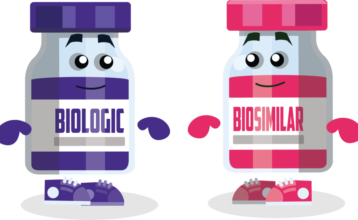Isn’t it Time for Pharmacists to Prescribe? -Part I
- By
- Jonathan Jacobs
Isn’t it time for Pharmacists to Prescribe?-Part I

Pharmacist Prescribing
More and more states and local medical associations have begun to consider allowing Pharmacists to prescribe medications. This is an idea that is no longer just a wish but a public necessity. Doctor visits can be expensive and unnecessary for many though their critical maintenance meds may not be. Healthcare costs and today’s front-line system of primary healthcare for most, the Clinic or ‘Doc in the Box’ specifically merits allowing patients to see a healthcare professional more familiar with them and their long medical history than what we currently encounter in lieu of a real General Practitioner. For most, their local Pharmacist is one of the most trusted professionals we deal with in our daily lives. Governments and specifically state medical associations recognize this.
The role of the pharmacist in public health has been transforming and expanding in recent years. For example, in many states, including New York, pharmacists can become certified to provide injections such vaccinations and long-acting antipsychotics without the appointment and trip to the doctor’s office. In 2012, the number of vaccines administered by pharmacists was expanded from just the flu shot, to include a total of 10 adult vaccines for prevention of illnesses such as shingles, hepatitis A and B, meningitis, and more.4 In many cases, vaccines are available through prescription insurance without a copay or the cost of an office visit. In many states, pharmacists have the authority to recommend and prescribe routine medications such as smoking cessation agents and oral contraceptives, as well as interpret common diagnostic tools such as for influenza and strep throat. The trend continues to expand in many other states as the need for accessible and affordable healthcare continues to grow and an untapped resource of providers is being recognized.
State pharmacy boards, the National Association of Boards of Pharmacy, and several retail pharmacy chains have pushed to create a third category under U.S. Federal Drug Administration (FDA) regulations, redefining certain prescription drugs for common illnesses as “nonprescription drugs,” which would give pharmacists the right to routinely dispense them without prescription by physicians. If this proposal passes, urgent care providers may see pharmacists become a new type of health-care provider for walk-in patients. Physicians will be forced to work with pharmacists to coordinate a level of care to ensure the safety of their patients. Instead of scheduling an appointment with a physician, patients in Oregon and California can walk up to a pharmacy counter, fill out a health questionnaire, get their blood pressure checked, and, if everything’s okay, obtain the contraceptive from the pharmacist.
Along with Montana, New Mexico, North Carolina, and North Dakota, California gives pharmacists mid-level practitioner status, allowing them to enter into a collaborative practice agreement with any physician in order to initiate and modify any type of drug therapy, including controlled substances. However, federal law requires pharmacists to obtain a DEA registration number before prescribing controlled substances. With this mid-level practitioner status, patients can now walk into a pharmacy for immediate attention concerning their pain management, which is very convenient for them.
The following categories are being most considered for RPH prescribing privileges:
*There has not been anything released currently by the CDC regarding pharmacists prescribing any medications related or rumored to treat any symptoms of Coronavirus even for states that privileges currently exist. In our next piece see “Isn’t it Time for Pharmacists to Prescribe” Part II-How are Pharmacists going about getting certified to Prescribe Medications
Additional related information and other links:
Best Practices For Pharmacy Retailers – Part I: From Absentee Owner to Front-Line Employee




